Bullo Pill Railway
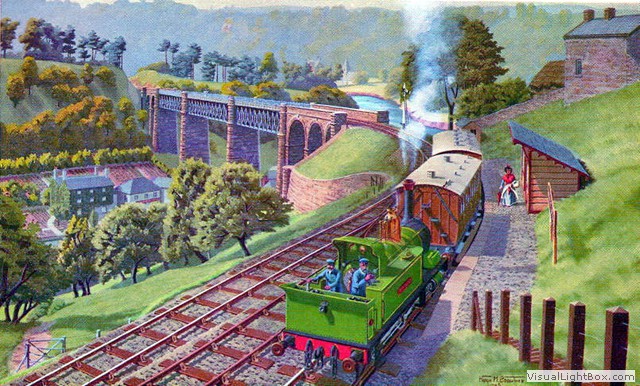 The Forest of Dean has one of the smaller coalfields in the British Isles, but intensive mining during the 19th and 20th centuries had enormous influence on the landscape, culture, and economy of the area. The mines were fed by a plethora of railways, which have have been quiet for more than five decades, leaving behind an extensive trail network over a relatively small area, making the forest of Dean a magnet for cyclists. A few weeks ago I rode along a true lost railway- The Forest of Dean Central railway. This time I’m going to ride along (or near to) a line which extended from Bullo Pill on the Severn estuary into the Forest of Dean where it spidered into loads of collieries and terminated at Cinderford. There’s a few interesting things about the Bullo Pill Railway Company which was later absorbed by the Forest of Dean Railway Company and subsequently the South Wales Railway Company. Less than a mile from the origin was the Haie (or Hay) Hill tunnel, over a thousand yards long when completed in 1810 and at the time it was the longest railway tunnel in the world.
The Forest of Dean has one of the smaller coalfields in the British Isles, but intensive mining during the 19th and 20th centuries had enormous influence on the landscape, culture, and economy of the area. The mines were fed by a plethora of railways, which have have been quiet for more than five decades, leaving behind an extensive trail network over a relatively small area, making the forest of Dean a magnet for cyclists. A few weeks ago I rode along a true lost railway- The Forest of Dean Central railway. This time I’m going to ride along (or near to) a line which extended from Bullo Pill on the Severn estuary into the Forest of Dean where it spidered into loads of collieries and terminated at Cinderford. There’s a few interesting things about the Bullo Pill Railway Company which was later absorbed by the Forest of Dean Railway Company and subsequently the South Wales Railway Company. Less than a mile from the origin was the Haie (or Hay) Hill tunnel, over a thousand yards long when completed in 1810 and at the time it was the longest railway tunnel in the world.
Bullo Pill- Cinderford- Lydney (26 miles)
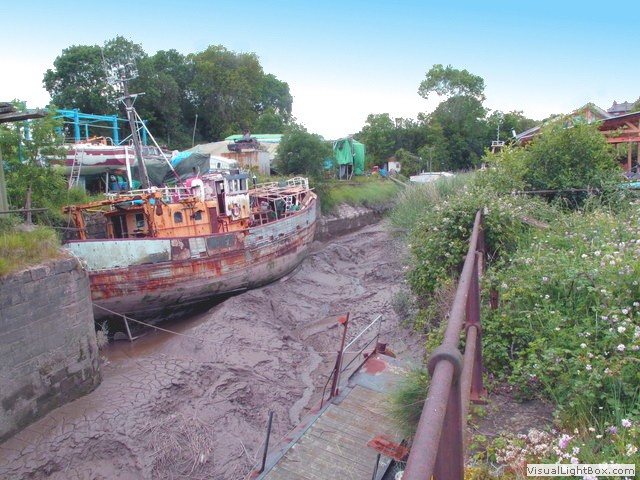 We start the ride in Lydney High Street and continue out to Purton then Awre following a route I did a few weeks go, eventually ending up at Bullo Pill, the real start of the ride. There’s not much at Bullo Pill these days (click the image to see how it was), it used to have a small basin with lock gates. The dock walls are still there, but now the basin has silted up and the lock gates are permanently propped open with an old ferry. There was an old tramway into the forest from here, today it’s absorbed by the road in. The area was fed by railway from a siding off the Gloucester to Newport main line, the same siding curved away from the mainline and towards Haie hill. You have to cross the the main A48 road and into a little lane to really begin following the line. Once at ‘Grove Farm’ look right and go through a gate, 100 yards down the hill and your on the line. Immediately turn west and the stone embankment begins, it leads you to what was in its time- Haie Hill tunnel, the longest tunnel in the world and remains the oldest tunnel ever to used by passenger carrying trains.
We start the ride in Lydney High Street and continue out to Purton then Awre following a route I did a few weeks go, eventually ending up at Bullo Pill, the real start of the ride. There’s not much at Bullo Pill these days (click the image to see how it was), it used to have a small basin with lock gates. The dock walls are still there, but now the basin has silted up and the lock gates are permanently propped open with an old ferry. There was an old tramway into the forest from here, today it’s absorbed by the road in. The area was fed by railway from a siding off the Gloucester to Newport main line, the same siding curved away from the mainline and towards Haie hill. You have to cross the the main A48 road and into a little lane to really begin following the line. Once at ‘Grove Farm’ look right and go through a gate, 100 yards down the hill and your on the line. Immediately turn west and the stone embankment begins, it leads you to what was in its time- Haie Hill tunnel, the longest tunnel in the world and remains the oldest tunnel ever to used by passenger carrying trains.
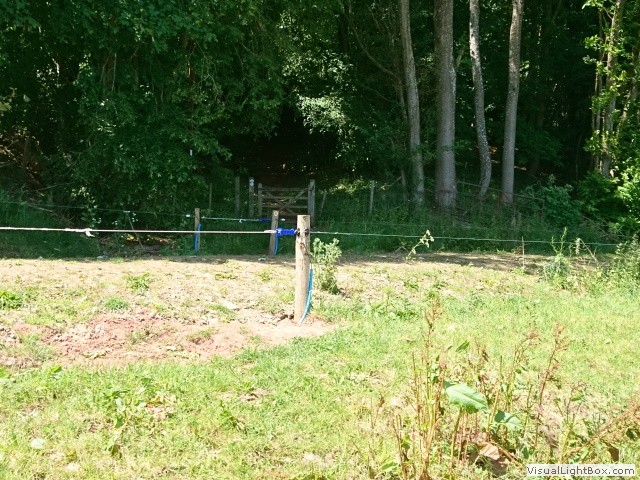 We retrace our steps back to Grove farm where there’s a public footpath, but the footpath is too overgrown to pass, so try and follow it in the field you were in (there’s a trail there where other people have done the same). It brings you out to a farm road where we continue on the public footpath through a beautiful dense woodland. You will come to a another farm track, here you cross straight ahead onto another footpath (you should use an OS app on your phone here as I went the wrong way to begin with, following the forest track but eventually you will come to Soudley). We descend on a small steep path onto a small lane, turn left and you will see the eastern portal to the Haie tunnel. Here it crossed the lane we just rode down and back into Bradley hill tunnel. Continue on the lane about 100 yards through a gate (this may be a private lane now) and on the left is the remains of Soudley Ironworks, only the supporting walls remain of the kilns.
We retrace our steps back to Grove farm where there’s a public footpath, but the footpath is too overgrown to pass, so try and follow it in the field you were in (there’s a trail there where other people have done the same). It brings you out to a farm road where we continue on the public footpath through a beautiful dense woodland. You will come to a another farm track, here you cross straight ahead onto another footpath (you should use an OS app on your phone here as I went the wrong way to begin with, following the forest track but eventually you will come to Soudley). We descend on a small steep path onto a small lane, turn left and you will see the eastern portal to the Haie tunnel. Here it crossed the lane we just rode down and back into Bradley hill tunnel. Continue on the lane about 100 yards through a gate (this may be a private lane now) and on the left is the remains of Soudley Ironworks, only the supporting walls remain of the kilns.
 Heading back to the main road we shortly arrive at Dean Heritage Centre where we have a coffee and then plough on. Straight away we turn onto an old tramway now a little lane that parallels the main road. We come back onto the main road at the White Horse pub and turn right off the road to continue on the Forest of Dean Railway Company trackbed. We come across the northern portal to Bluerock (Soudley) Tunnel where there’s an impressive wooden sculpture of a ‘Hod Boy’ sculpture. Hod Boys were literally young lads, chosen for their small stature, they dragged hods or drams full of coal from the coal face to the main shaft through some of the very low (2ft or less) working tunnels. The trail continued where there were a few more sculptures, then we drop down to Ruspidge road right opposite the site of the Eastern United Colliery now converted into industrial units. Inside the the gates was was Staple Edge Halt railwayway station, now nothing left. It's back on the road a short distance to 'Railway Road' where we follow it to Ruspidge, crossing the road to arrive at 'Ruspidge Halt'. Here, there’s a small reproduction platform and the remains of an old railway oil truck.
Heading back to the main road we shortly arrive at Dean Heritage Centre where we have a coffee and then plough on. Straight away we turn onto an old tramway now a little lane that parallels the main road. We come back onto the main road at the White Horse pub and turn right off the road to continue on the Forest of Dean Railway Company trackbed. We come across the northern portal to Bluerock (Soudley) Tunnel where there’s an impressive wooden sculpture of a ‘Hod Boy’ sculpture. Hod Boys were literally young lads, chosen for their small stature, they dragged hods or drams full of coal from the coal face to the main shaft through some of the very low (2ft or less) working tunnels. The trail continued where there were a few more sculptures, then we drop down to Ruspidge road right opposite the site of the Eastern United Colliery now converted into industrial units. Inside the the gates was was Staple Edge Halt railwayway station, now nothing left. It's back on the road a short distance to 'Railway Road' where we follow it to Ruspidge, crossing the road to arrive at 'Ruspidge Halt'. Here, there’s a small reproduction platform and the remains of an old railway oil truck.
 The old railway trackbed now becomes Linear Park on the outskirts of Cinderford, and used to splinter into several different ways to feed Forestvale and Cinderford ironworks. The railway terminates here at the site of the old Hawkwell Tin works next to Steam Mills lake, where we turn south West onto a forest track. Now turning onto the old Severn & Wye Junction Railway. On the family trail now passing Drybrook station (or whats left of it, only a reproduction sign) and under Trafalgar Arch bridge, a strange structure that seemingly goes nowhere. A little diversion takes you to Trafalgar Colliery tunnel; this had a crudely-hewn, unlined tunnel of about 137 metres linked to another smaller colliery, the wonderfully-named 'Strip-and-at-it mine'.
The old railway trackbed now becomes Linear Park on the outskirts of Cinderford, and used to splinter into several different ways to feed Forestvale and Cinderford ironworks. The railway terminates here at the site of the old Hawkwell Tin works next to Steam Mills lake, where we turn south West onto a forest track. Now turning onto the old Severn & Wye Junction Railway. On the family trail now passing Drybrook station (or whats left of it, only a reproduction sign) and under Trafalgar Arch bridge, a strange structure that seemingly goes nowhere. A little diversion takes you to Trafalgar Colliery tunnel; this had a crudely-hewn, unlined tunnel of about 137 metres linked to another smaller colliery, the wonderfully-named 'Strip-and-at-it mine'.
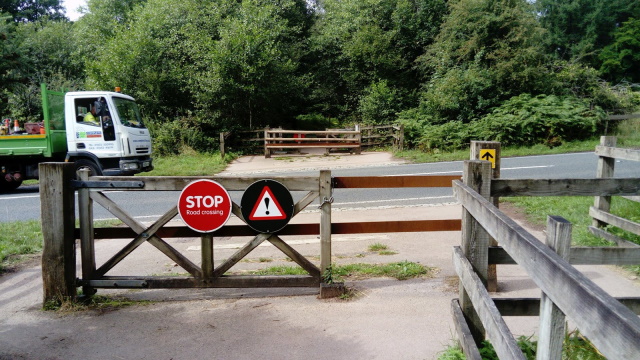 At Speech House Road was a station with the same namesake, going on old images there was a wonderful station/ gate keepers cottage and a small signal box, now all that's left is a reproduction sign. Turn right here and plod up the hill ½ mile to Hopewell colliery, a working mine and museum (with a cafe). Retrace your route and proceed to Cannop ponds, the ponds were formed in 1825 and 1829 to supply a waterwheel at the nearby Parkend Ironworks, possibly using ore mined in the local area. Considering we've just come out of lock down the area is saturated with people, it's as if the virus never happened. People are queuing close to each other getting coffees, ice creams and so on. I sat and had a drink from my bottle and moved on to Parkend. Turning left at Whitemead Park eventually rejoining Oakwood branch-line (Severn & Wye Jt Rly) which supplied Parkgutter Coal Pit from the south. It's on the road now to join Bream Road which will take me back to Lydney.
At Speech House Road was a station with the same namesake, going on old images there was a wonderful station/ gate keepers cottage and a small signal box, now all that's left is a reproduction sign. Turn right here and plod up the hill ½ mile to Hopewell colliery, a working mine and museum (with a cafe). Retrace your route and proceed to Cannop ponds, the ponds were formed in 1825 and 1829 to supply a waterwheel at the nearby Parkend Ironworks, possibly using ore mined in the local area. Considering we've just come out of lock down the area is saturated with people, it's as if the virus never happened. People are queuing close to each other getting coffees, ice creams and so on. I sat and had a drink from my bottle and moved on to Parkend. Turning left at Whitemead Park eventually rejoining Oakwood branch-line (Severn & Wye Jt Rly) which supplied Parkgutter Coal Pit from the south. It's on the road now to join Bream Road which will take me back to Lydney.
This was a great circular ride, it's clear, it's going to take quite a while to ride all of these old railways. Though the area is so popular, no matter which time you ride the area, it’s mildly populated to full. So be selective when you visit.
-
Gallery
 Why not have a look at the gallery relating to this ride. Click the image or the title.
Why not have a look at the gallery relating to this ride. Click the image or the title. -
Longest tunnel in the world
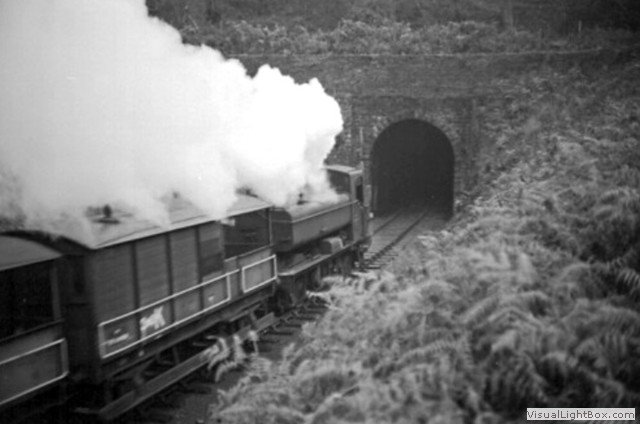 Haie Hill Tunnel was the longest railway tunnel in the world when it was created, but could only have held this status for six years as the much longer Pwll Du tunnel opened in 1816 in Blaenavon. It is very probably still the oldest tunnel in the world to have taken passenger trains.
Haie Hill Tunnel was the longest railway tunnel in the world when it was created, but could only have held this status for six years as the much longer Pwll Du tunnel opened in 1816 in Blaenavon. It is very probably still the oldest tunnel in the world to have taken passenger trains. -
Soudley iron works
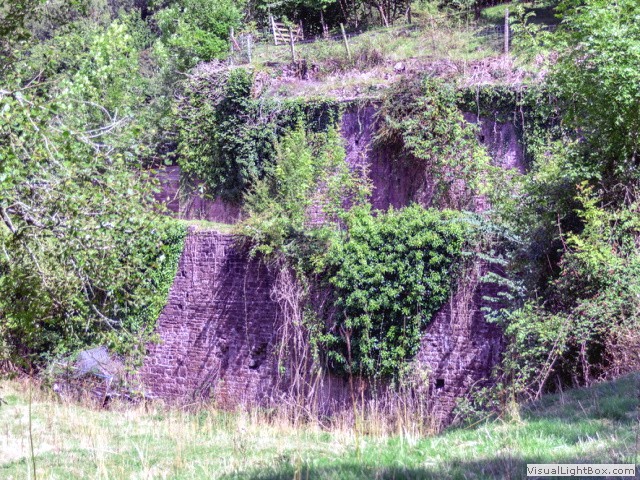 The furnaces were erected in 1837 and within the space of thirty years changed owners three times. The last remaining working furnace closed in 1875.
The furnaces were erected in 1837 and within the space of thirty years changed owners three times. The last remaining working furnace closed in 1875. -
Hod boys & girls
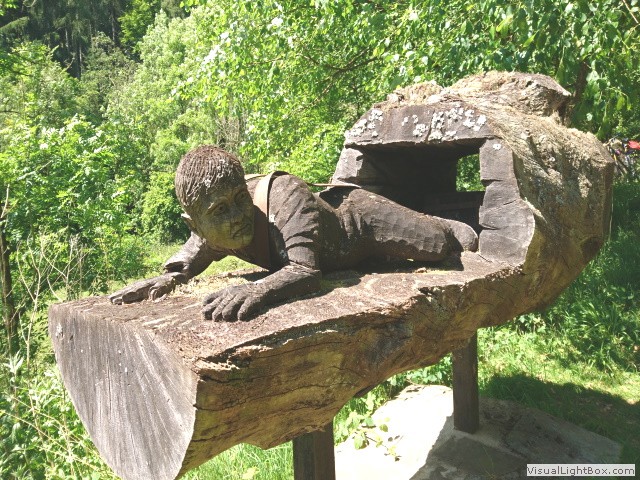 In the narrow mine shafts, children, both girls and boys, as young as 8 were widely employed in the mines all over Great Britain.Their small stature could get into the smallest places.
In the narrow mine shafts, children, both girls and boys, as young as 8 were widely employed in the mines all over Great Britain.Their small stature could get into the smallest places. -
Eastern United Colliery
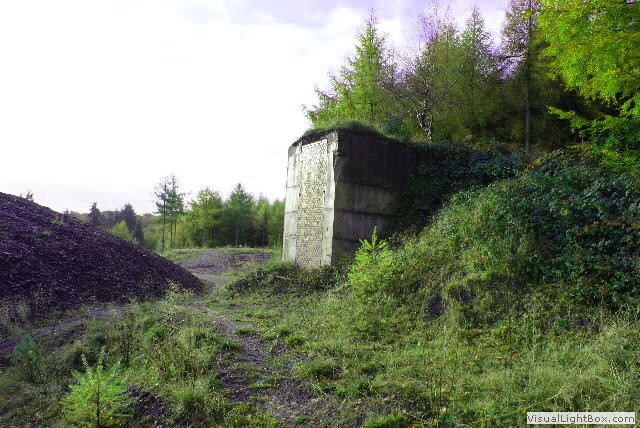 Eastern United Colliery closed more than fifty years ago, but in 2001 produced coal once again - from its slag heaps. The scheme involved extracting fine particles of coal from the waste left behind when the mine closed.
Eastern United Colliery closed more than fifty years ago, but in 2001 produced coal once again - from its slag heaps. The scheme involved extracting fine particles of coal from the waste left behind when the mine closed. -
Trafalgar Colliery
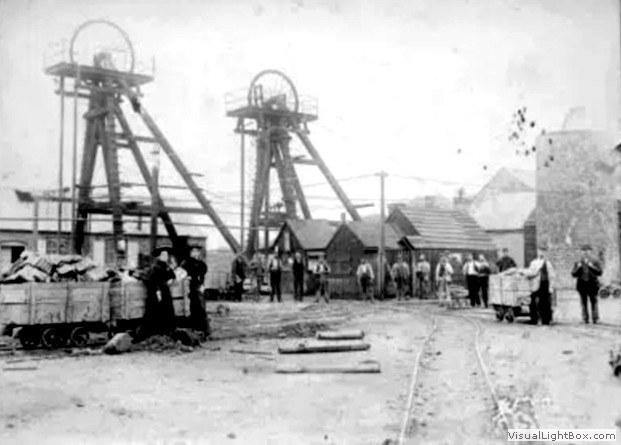 Trafalgar Colliery was unique amongst most collieries in that it was gas-lit underground, this only being possible due to the specific mines freedom from gas or firedamp.
Trafalgar Colliery was unique amongst most collieries in that it was gas-lit underground, this only being possible due to the specific mines freedom from gas or firedamp. -
Bullo Pill and the Forest of Dean railway
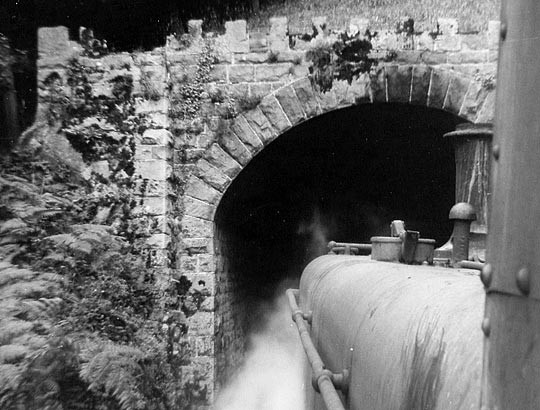 A more intensive report of the line is covered by a web article written by Roger Farnworth, click here to read about it.
A more intensive report of the line is covered by a web article written by Roger Farnworth, click here to read about it. -
Download gpx route from this ride.
 Click the road icon on the right to go to download page, click the appropriate icon and start enjoying some fantastic journeys.
Click the road icon on the right to go to download page, click the appropriate icon and start enjoying some fantastic journeys.
